The Curly Coated Retriever, often referred to affectionately as the Curly, may not be as famous as its retriever cousins. However, these dogs offer many of the same benefits as classics like the Labrador and Golden.
Indeed, they’re some of the oldest retrievers too. These dogs are hardworking in the field, but also make lovely companions in many family homes. Read on to learn more about the Curly Coated Retriever.
Description of the Curly Coated Retriever
These dogs are known for their distinctive coat of tight curls. It, and their large, tapered heads, set them apart from other retrievers. They’re most commonly found in black, but also come in a rich liver color.
The Curly Coated Retriever has a graceful and powerful build. their big bones indicate their sturdiness, but don’t give away their surprising agility. They have the substance and balance needed of sporting dogs.
This breed is one of the oldest retrievers. People only began breeding them from other sporting dogs in Britain, in the 1700s.
Life Expectancy and Size
The Curly generally lives between 10 and 12 years. Unfortunately, many have serious health concerns that may shorten their lifespan.
These dogs can be quite large in size, especially the males. Most Curlies stand between 23 – 27 inches at the shoulder. They weigh a substantial 60 to 95 pounds.
Protective Ability
This breed is not known for its protective capacity. Although alert, they are not extremely vocal. However, they are better watchdogs than most other retrievers, and some individuals love alerting their owners to new visitors. Most Curlies are somewhat reserved with strangers, and will need to be socialized to turn into well-mannered adults.
Training
The Curly Coated Retriever is job-oriented and smart as a whip. Give these dogs a reason to listen and they will happily oblige.
It is smart to approach everything like a job with the Curly. If they think training is silly or pointless, they will be less likely to listen. Be clear with commands and limit repetition lest they become bored.
Make sure to approach the Curly’s training with positivity. These are sensitive dogs that feed off of their owner’s emotions. Do not be tempted to become strict or harsh. Rather approach the Curly’s training through reward- and relationship-based methods.
Energy Level
In youth, this breed can be a bit of a handful. Like many large and athletic dogs, they can be bouncy and boisterous. These dogs in particular can act like puppies for many years.
As adults, Curlies are high energy and require adequate exercise to stay happy and fit. However, they’re calm enough to make good family pets. They’re famous for settling into home life like champions.
What Living with a Curly Coated Retriever is Like
This dog is an example of a fine family pet. The Curly Coated Retriever has a great, double-sided personality. While they are social and calm at home, they are also athletic and always ready to play or work when they have the option. This breed is a good choice for active owners or those with children.
The Curly can adapt to a variety of environments, although they should have at least some access to the outdoors. They are social creatures, and may suffer from separation anxiety. However, they are more reserved with strangers than most retrievers. They’re generally good with other pets.
Care of the Curly Coated Retriever
These dogs need adequate exercise, but give it to them and they will reward you with all the characteristics of a great family pet.
Environmental Needs
The Curly Coated Retriever’s breeding enables him to be outdoors in all weather. Today, this dog can fit well into most environments, both hot and cold. They love the outdoors and should always have access to a place to romp. Curlies are especially well-suited to the water.
Exercise Needs
As a hunting dog, the Curly Coated Retriever requires adequate exercise.
This could come in a variety of forms. For some families, long daily walks can be a good way to keep these retrievers happy.
These dogs make great companions for athletic owners, too. They can keep up with runners or bikers. Of course, they would make great hunting dogs for those so inclined. Many Curlies love to swim and can have fun in the water for hours.
Shedding and Grooming
Despite the look of this breed’s luxurious coat, it requires very little maintenance.
They only need occasional baths. In fact, too much bathing can irritate the skin. Most owners avoid brushing in favor rub downs with a wet towel. Air drying the coat will allow the Curly’s namesake curls to reform.
These dogs do shed, but only seasonally. Females tend to lose more hair during these periods.
Ideal Home Environment
This breed is perfect for families. They are great with well-behaved children and enjoy the company of family pets.
Ideally, the Curly has an owner that can keep up with his athleticism. This could be as simple as playing with him in the yard or taking him for hikes and runs. These social dogs should always have plenty of interaction with their family. Otherwise, they can become bored and destructive.
This dog will do particularly well with adequate access to the outdoors.
Health Concerns
This breed has a few significant health concerns. Many retrievers have severe trouble with their joints. Responsible breeders can screen for heart and eye problems.
Other issues include epilepsy and cancer in some lines.
Behavior Problems
This breed is not known for excessive behavioral issues.
Some can be mouthy, especially when young. Another issue that can arise is separation anxiety or more generalized boredom. This breed is not well suited to being left alone for most of the day or going without exercise. Both can lead to destructive behavior.


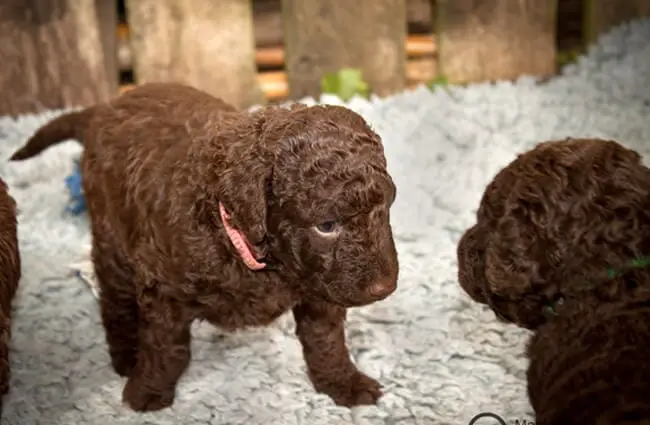

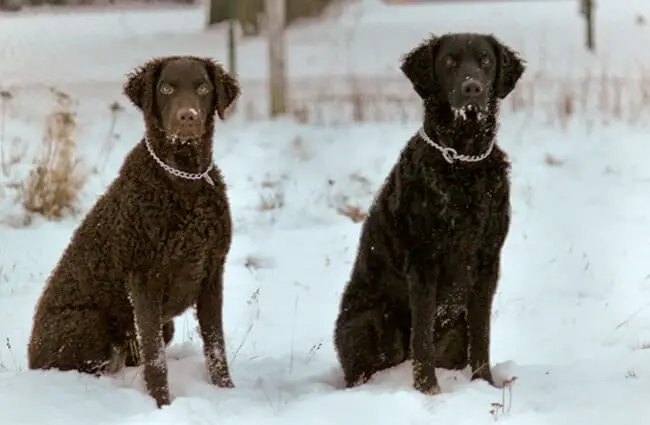
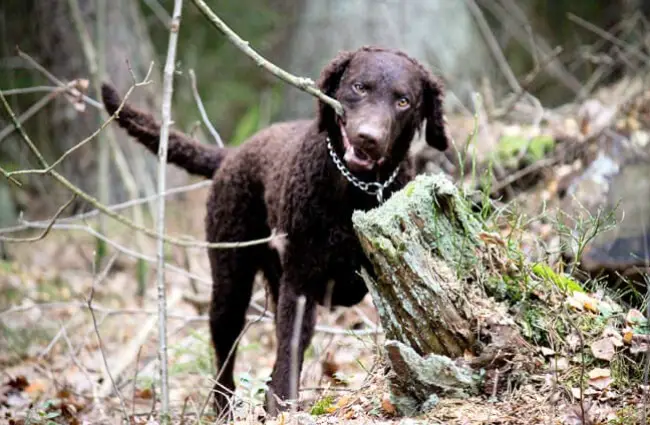
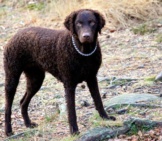
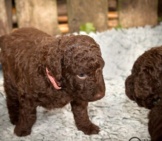


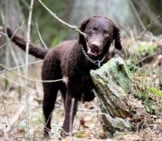













![Red Angus Closeup of a beautiful Red Angus cowPhoto by: U.S. Department of Agriculture [pubic domain]https://creativecommons.org/licenses/by/2.0/](https://animals.net/wp-content/uploads/2020/03/Red-Angus-4-100x75.jpg)

